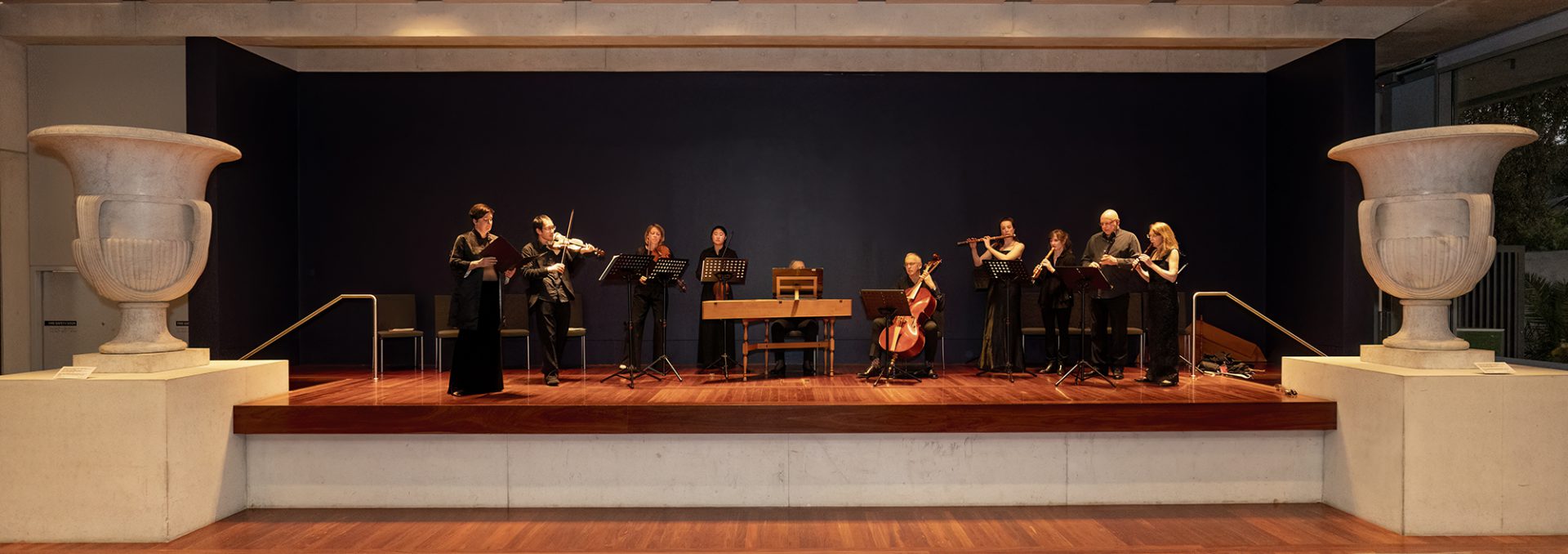The concert began with the Allegro from Vivaldi’s Concerto in G minor RV 576. It was an interpretation that had few embellishments, with the wavering duos on recorder not lightened by trills, and made more stark by the urgency of the oboe’s repeated notes. The fast violin solos were played like a shimmering flash of light by John Ma. It was a fitting opening piece.
Next was Handel’s aria Sweet Bird from L’Allegro, il Pensroso ed il Moderato. This piece alone encapsulated the entire theme of this concert – sweet melodies and angry tempests. Sweet melodies were in abundance in the first few bars, as Sally Walker on Baroque flute delightfully imitates a birdsong. Then enters soprano Anna Fraser, who makes a terrific first impression with an extended and full-bodied trill that pervades the Verbrugghen Hall. Fraser’s animated voice was perfectly suited to this piece, which calls for a wide vocal range – the jumps in ‘melancholy’ – and impeccable control. What can be said of the voice must be said of the flute, as both are in dialogue throughout. Walker’s playing was full of emotion and technical dexterity, and one could sense a faint hint of vibrato. The call-and-response passages between Walker and Fraser gave the impression of Rameau’s L’rappel des oiseaux, and a highlight was the tense harmonic build-up in the more melancholic passages depicting the ascent of the moon.
Marcello’s Concerto in D Minor for oboe is always bound to be a crowd-pleaser, as Bach evidently thought (cf BWV 974). This performance was no exception. It is fitting that this piece was performed immediately after Handel’s aria, as it emphasises one of the most striking qualities of the Baroque oboe, which is its closeness to the human voice. Jane Downer negotiated well the meandering plaintive passages of the Adagio, but it is in the Presto that she shone. It was played here at a lively tempo, and it calls for the sort of melodic control at which Downer excels.
Peri’s Tu dormi e’l dolce sonno was an opportunity to showcase the intimacy of solo soprano. We can see compositional techniques that were to characterise Peri’s successor to this artform – the use of tremolos to dpict anguish at ‘pianto’ and sudden changes to minor mode in ‘morir’ to give a delicious chiaroscuro effect. Monika Kornel made tasteful basso continuo realisations on harpsichord, here played on buff stop which gave the impression of a lute, which reinforced the intimate madrigalesque quality of this piece.
The aria Die Seele ruht in Jesu Handen from Bach’s Cantata No 127 kept with the contemplative theme. It reflects on the theme of death. But this is no dirge. It has an almost catchy sense of momentum, depicted by the pulsating recorders. The heart-rending theme, based faintly on a jarring augmented fourth, is introduced beautifully by Downer on oboe. Fraser’s control on the extended ‘ruht’ is a moment to behold, as is a particularly forceful trill, as though dispelling the fear of death, on ‘wieder weckt’.
Particularly impressive was Vivaldi’s In furore iustissimae irae. It is notoriously difficult to perform. Sydney audiences were treated a while ago to a stunning rendition by Miriam Allen, joining Pinchgut. John Ma seemed to revel in leading the fiery instrumental introduction. Fraser, in a display of coloratura, despatches a few rushing scales with ease, throws in the occasional dramatic quiver, and varies her volume for the meandering ‘potentes’.
Sticking with the theme of instrumental intermidi was the Grave from Tartini’s Concerto in E major. There was no sign of the obsessive intensity of his famous Devil’s Trill Sonata. Instead there was a perfectly agreeable, almost wistful, charm about it all. The piece was arranged for flute as the showpiece; and showpiece it was. Walker’s expressive playing was again on full display here.
Last was Giovanni Stefani’s madrigal Bella mia questo core (1621). It begins with a jaunty, syncopated bassline rendered by Kornel on harpsichord and Tim Blomfield playing pizzicato. Hallmarks of the early Baroque were on full display when there was a sudden shifted metre for a short instrumental interlude. It showed that Fraser was equally at home with the more lively, almost rustic, songs of the Baroque.
